by Ed Praxel
In the 1970s, one of my ambitions was to race a car on as many British race circuits as possible. So, with help from friends and family I set out to do this. A relocation from Panama to the north of England was the first part of accomplishing this quest. The second part began when I read a “for sale” ad in a British car magazine advertising a Lotus 69 Formula Ford. Colin Chapman’s innovative designs were obvious in the esthetics of the 69. I bought it, and so began the adventure.
Croft – 1972
Croft, in the north of England, was my first race and I drove cautiously during practice. Thus, I was at the back of the grid for the actual race, but like Graham Hill used to say, “You meet the nicest people at the back of the grid.”
As a novice I was required to have six signatures on my Restricted license and must have raced on at least two race circuits before I could obtain my National license. I also had to identify my novice status with a large black X on the rear of the car.
As the race progressed I became more confident and was using the brakes later and harder at the end of the straight before the chicane. The next lap I applied the brakes vigorously and the car swapped ends and I was in a lurid slide on the grass. I just clipped a marshal’s post and that resulted in no signature for my license! Not a very auspicious start to my racing aspirations. Adjusting the brake bar balance remedied that problem.
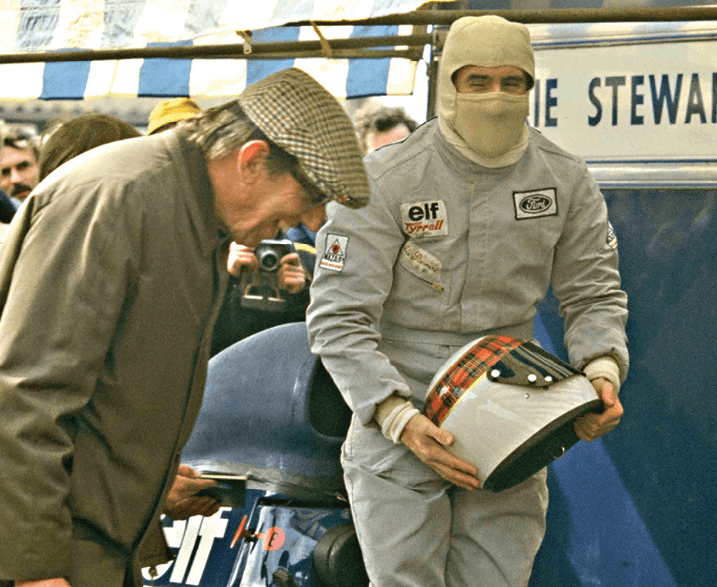
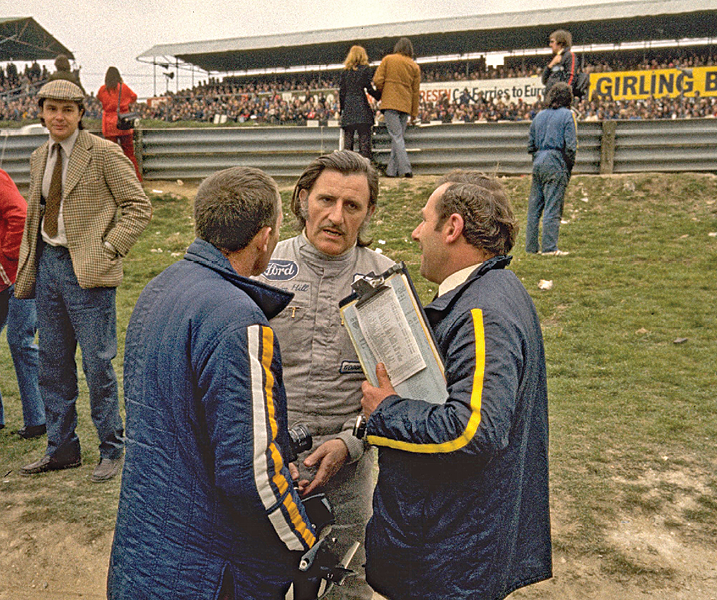
Cadwell Park
Cadwell Park was referred to as the most challenging circuit in Britain as it undulates over a considerable drop and rise in terrain. One of the marshals, in a serious manner indicated to me that at the end of the short section of track there was a barn and the farmer left the doors open so that a car missing the following turn could run through the barn without doing themselves damage. Sure enough, on my first lap there was a stone barn and the doors were open! I was driving cautiously so I didn’t avail myself of the farmer’s kind consideration.
Thruxton
Another destination was Thruxton race circuit 240 miles south of our home in Harrogate on rural roads that wound through one village after another. Thruxton had a long downhill gradient which used the highest cogged gear I had. The straightaway was approached on a sweeping corner, which could be deceptive if a car was set up for understeer. The end of the straightaway was an abrupt chicane. I felt it was a demanding circuit.
While in the vicinity we visited Salisbury Plain and the 5000-year-old stone monolith, Stonehenge. As I stood where people of another age had existed I speculated on how man has evolved.
Mallory Park
Accommodations were sparse in the Mallory Park area so we decided to spend the night in the rough, meaning my mechanic Roy and I slept in the starter’s booth alongside the track, and my wife and daughter slept in our car. We went prepared for most eventualities and always carried camping gear. The next morning the aroma of bacon, eggs, and coffee was a good way to start the day.
Mallory Park was the shortest circuit in England—a little over a mile and a half. The track was flat in the oblong portion with a spur that climbed steeply to a hairpin curve and then dropped away to a blind left-hand turn. The downhill gradient didn’t have landmarks so the driver momentarily looked out into space. It took fortitude to determine the braking point. It was a good circuit to learn on and one of my favorites.
Mallory was also one of the few racetracks that had entertainment between morning practice and the afternoon races. At one event the RAF Red Arrows performed precision flying. The red smoke trailing from each jet defined the maneuvers. Another event was competitive men’s rollerskating, excluding the hairpin stretch. Motorcycle events also took place at Mallory.
In 1975 I made arrangements to meet a person from the engineering works that rebuilt the Lotus’ engine. We were to meet at the pit entrance. The entry/exit road was narrow and cars were parked over a mile out from the track. I wondered what event was taking place and soon found out that Radio1 had scheduled a fund raiser music program that included the “Bay City Rollers” a pop rock group world famous in the ’70s. Some 47,000 people were in attendance and quite a stir was made when “…A number of teenage girls ended up in the famous Mallory Lake in a bid to accost the Bay City Rollers…” The band never did get to perform. I did, however, get my engine.
Rufforth
Rufforth (a former RAF WWII aerodrome) was our backyard circuit and closest to home in Harrogate, Yorkshire. It was flat and featureless with a lot of room to “explore the grass!”
It was an enjoyable track to race on with a relaxed atmosphere where people mingled and anyone needing assistance was helped with parts or loans of equipment. It was club racing at its best.
Silverstone
Silverstone was hosting a sports prototype event and I was on the grid for a Formula Ford support race which was on the long circuit. Previously I had raced at Silverstone only on the short club circuit. In walking the pit area I noted an outbuilding with graffiti carved into it. The writing, at about head high, declared “War is big business, invest your son!” It wasn’t dated but the message, unfortunately, is timeless.
In racing terminology “turning a wheel in anger” refers to race competition and I thought of a time past when plane wheels headed for their targets did turn in anger on Royal Air Force aerodromes like Silverstone.
My young daughter and I walked along the pit area that evening and the atmosphere was punctuated by the din of generators which produced the lights for the teams as each team provided its own amenities. She was impressed by one of the mechanics wearing wooden shoes (clogs).
Children’s Event
I was asked if I would bring the Lotus to a fund raiser on an estate where kids affected by the Thalidomide drug resided. It was mainly a showing of vintage cars and motorcycles and the Lotus looked like a dinky toy car compared to those horseless carriages. I didn’t know what the reception would be but I was kept busy explaining the features of the Lotus. A constant questions was “how do you get in and out of the car?” People were amazed at how close the bottom of the car was to the road surface (3 ½”) which meant my bottom was as well. A lady asked if she could have her picture taken with the car and before I could say anything she proceeded to sit on the fiberglass body shell forward of the wind screen. No cracks appeared and the lady thanked me. The event was determined a success and it was apparent that the Lotus fulfilled another function besides racing.
Ingliston, Scotland
Ingliston was a small, tight circuit near Edinburgh, Scotland, and there wasn’t any real run-off area. The event was by invitation and the race committee paid my trailer fee to the venue which was inside the Agricultural Fairgrounds. The paddock was in the covered livestock sheds area. Friends traveling in Europe attended the event and pit crewed the Lotus for me.
To conclude the day’s racing, there was a Formula Libre event, which I entered. Formula Libre is exactly what its name says—a free-for-all of any type of race car from open-wheel cars to sedans to sports cars. I was located on the grid next to a head-high door handle! My concern was that I hoped the driver knew I was there. This wasn’t a championship race so no points were involved and the atmosphere was congenial.
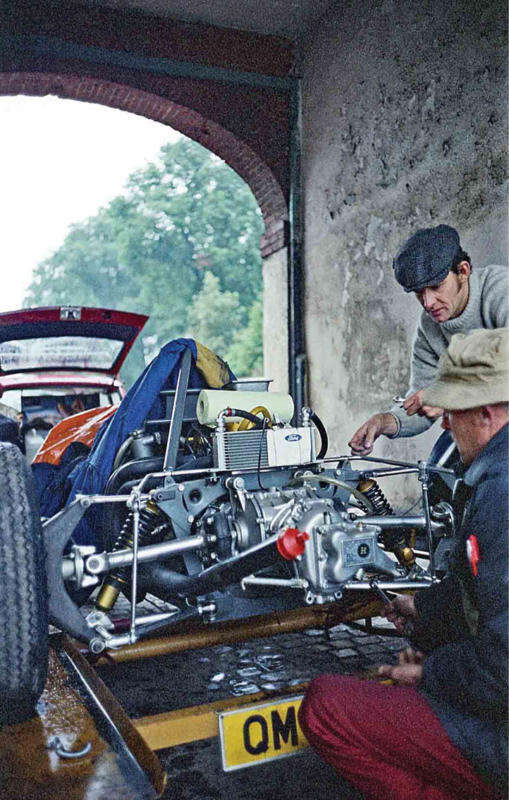
Oulton Park
Oulton Park was one of two races for the weekend and it proceeded to rain. The rain let up some after practice and Roy and I walked the pit looking at the various cars. It had been awhile since he was last there and he noted there was a new “convenience” of which he had to avail himself. The interior was finished in tile which was a considerable improvement over other circuits’ facilities. The partitions were raised about a foot off the floor. Roy started to laugh and said there was graffiti indicating “watch out for limbo dancers!”
The rain began again, and the track was really slick. The car next to me on the grid lost traction and to avoid him I moved over to the verge which was a loose surface. This pulled me in and a sand-like material packed up the clutch. We found an archway and pulled the car underneath. Fortunately there was a nearby hose and we flushed out the clutch housing.
Peter Harrington
I had accomplished my ambition of racing the Lotus so I temporarily retired it to consider future options. I had an underlying thought that to realize my car’s potential it would need an experienced driver. Coincidently, my friend Peter Harrington, who I knew when I began club racing, was between rides, so I asked him if he would be interested in racing the Lotus, and he said yes.
The first time Peter ran the car in its new red livery was at the end of the season at Croft. He came in fifth and said he needed more brake on the front. His assessment of the car was, “Let’s go for a championship next year.” We picked Tate of Leeds Championship which included the Croft, Cadwell Park, and Rufforth race circuits. When the season finished, Peter won that championship.
Snetterton
Snetterton was a flat, fast circuit located near Thetford in Norwich, England. The day I was there was a practice day and I decided to take the Lotus out for some laps. One of the marshals mentioned to watch out for “heavy machinery.” After a few laps, passing by the pit I noticed a Lotus transporter unloading a Team Lotus F1 similar to Mario Andretti’s #5. I paid particular attention to my mirrors and shortly what was a spec behind me suddenly filled the mirrors and vanished into the distance. I didn’t know the speed difference between the two of us but momentarily the air was turbulent. It was an unforgettable experience.
Aintree
We entered a Formula Ford Festival held at Aintree Circuit with over 100 entries. It gave teams a comparative field from across the country. Aintree Racecourse, near Liverpool, is best known for the Grand National steeplechase, but the inner area was also a car racing circuit. Peter qualified for the final grid but on the first lap the driver behind him proceeded to run up the back of the Lotus, over the roll bar, and launched himself into a vertical attitude. It looked like he was jumping an obstacle at the Grand National. Afterwards Peter commented that he had seen about every angle of a Formula Ford except for the bottom of one going over his head. This left us in a predicament (there was “trouble at mill”—Yorkshire expression) as the rear suspension was damaged, as well as the exhaust system, and next week’s race was at Croft for the Battle of Britain meeting. My friends and I had commitments during the week so we worked individually on the car as time was available leaving messages as to what had been completed and what was left to finish. The Lotus was turned out for the Croft Battle of Britain grid in its usual appearance and Peter won the championship. James Hunt, 1976 World Champion F1 driver, presented him with the trophy.
Club racing was an adventure but best of all were the friendships made and retained to this day.




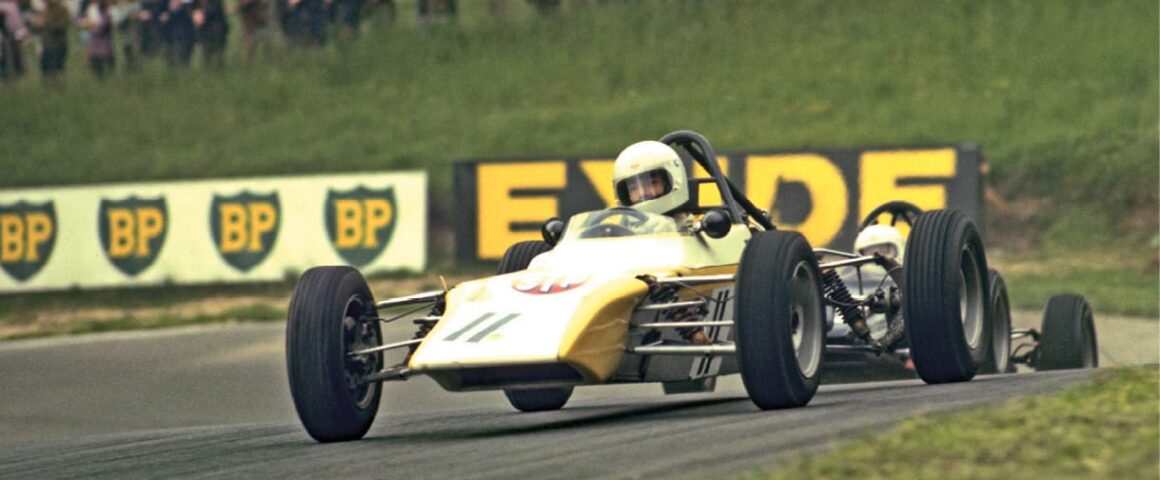
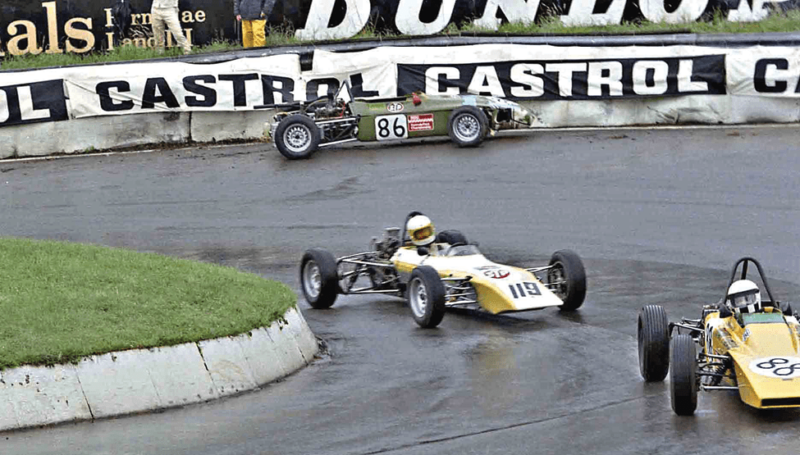
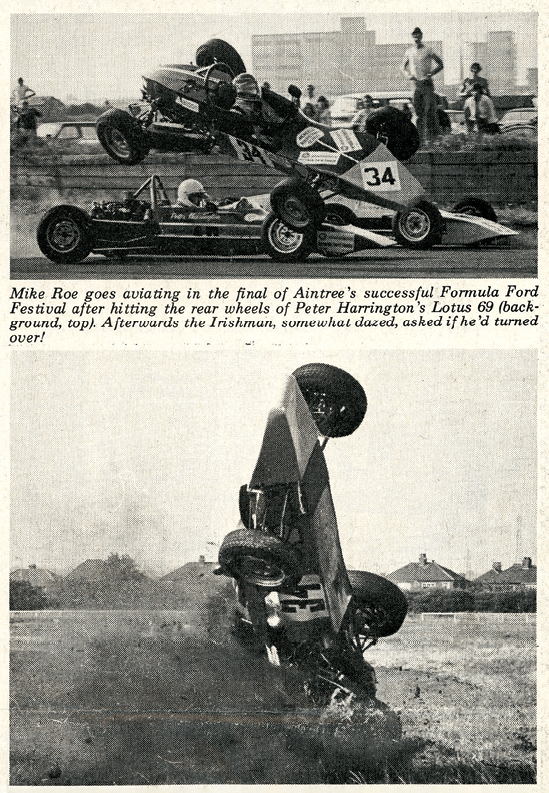
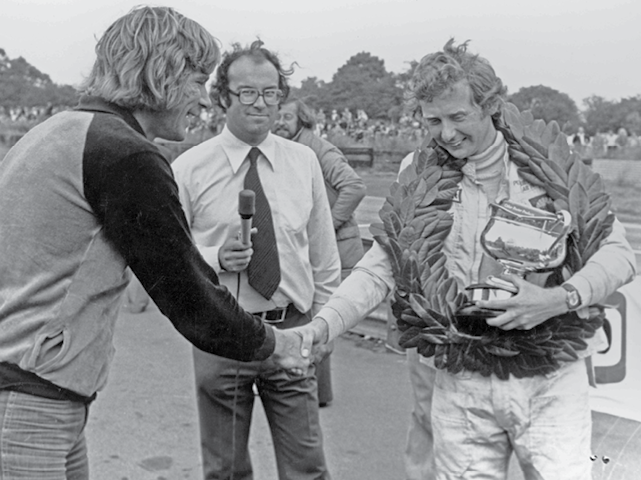
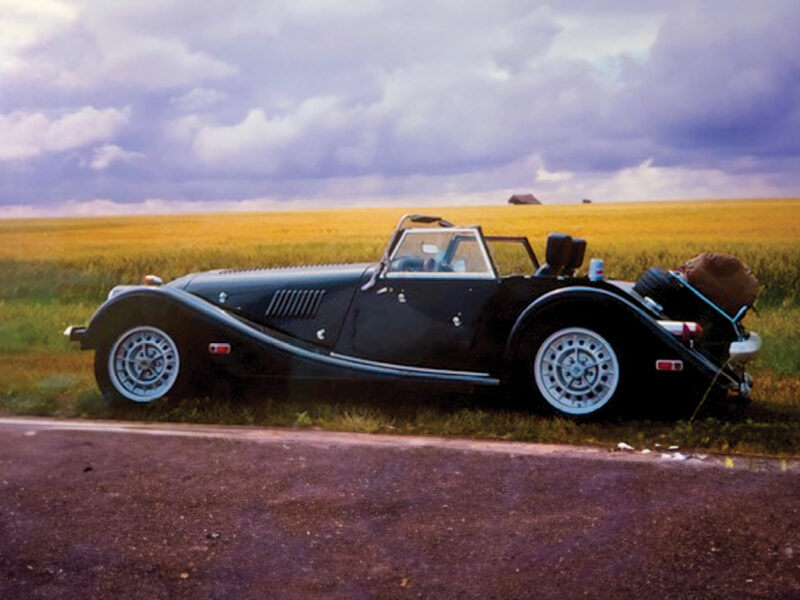
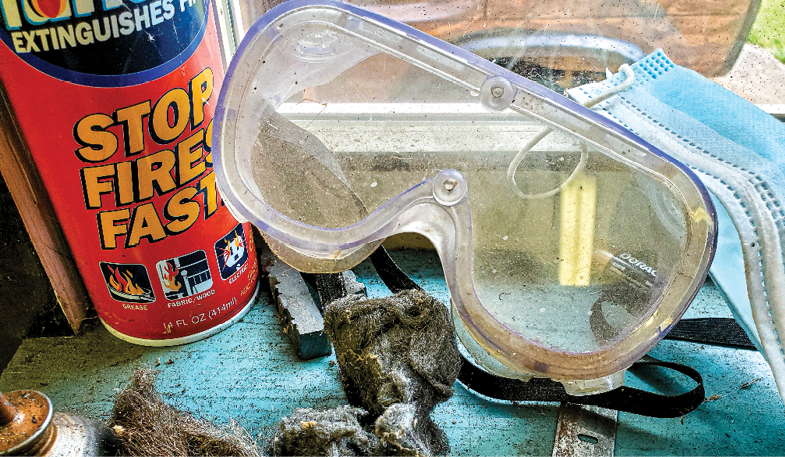

'Formula Ford Recollections' has no comments
Be the first to comment this post!